If you’re new to the world of instant pots, you must have come across the terms like natural pressure release and quick pressure release. What are they and how are they different? Which method is better? This in-depth guide is here to answer your questions.
But before we dig deeper, let’s understand the difference between the pressure cooker and the instant pot.
Table of Contents
Overview of a Pressure Cooker and Instant Pot
A pressure cooker is the traditional stovetop cooker that we have been using in our households for a long time. In comparison, the instant pot is an advanced electric pressure cooker that comes with great multitasking features to assist you with your cooking.
Although both have been designed to provide you with the best cooking experience, each type comes with the characteristics that can maximize your performance in the kitchen.
A stovetop cooker is perfect for all canning needs. It gains pressure faster and takes little time to release it. This reduces the overall cooking time. It is also quite easy to use and is even affordable. These days, there are tons of different kinds of pressure cookers, so make sure to review all your pressure cooker options before buying.
An instant pot is an intelligent electric cooker that has the functions of multiple cooking appliances. It speeds up your cooking and takes 2 to 6 times less time than a normal pot.
An instant pot speeds up the cooking time by 2 to 6 times. It is essentially a stovetop cooker with added features like an automatic shut-off function, LED control panel, delay timer, and variable cooking programs.
So, which device is the winner? If you want to look into their differences further, you can get a detailed explanation here - stovetop cooker vs instant pot.
Now that we know the basic differences, let's dive deeper into how they can be used.
Instant Pot Duo Crisp Pressure Cooker
Using an Instant Pot
It is very simple to use an instant pot. All you need to do is follow this process
- Add food and water
- Pressure cook your food
- Release pressure
If you’re planning to use an instant pot, one of the first questions you may have is how to release the steam that is formed in the pot while you're pressure cooking. The answer depends on what you are cooking.
There are 2 ways of releasing the pressure:
- Natural pressure release
- Quick pressure release
You can use one or a combination of both to safely release steam from an instant pot. But what are their differences? Let’s find out.
Instant Pot Duo Nova Pressure Cooker
What is Natural Release Instant Pot?
As the name suggests, you need to leave your instant pot to work on its own for this method. Your instant pot will release the pressure once it depressurizes on its own.
Your instant pot will signal you with a ‘beep’ stating that it has completed the cooking cycle and will automatically start releasing the pressure.
To figure out if your instant pot has released its steam completely, completely check the float valve for this. The natural release process is complete if it drops down.
Once the pressure is released it is now safe to open the lid. Remember, you will only be able to open the lid if the pot is depressurized. Never try to open the lid before this process.
What is Natural Release Time?
Natural release time relies on the following two factors:
The Size of Your Instant Pot
The instant pot is available in 4 different sizes: 3-quart, 5-quart, 6-quart, or 8-quart. The larger the size, the longer it will take for pressure to release.
The 8-quart Instant pot has a larger capacity, so it is likely to build up a larger volume of pressure. On the other hand, a 6-quart and a 3-quart instant pot will take less time to do a natural release.
What’s In the Instant Pot
The natural release process may last anywhere between a couple of minutes to 30 minutes, depending on what you are cooking. If cooking takes less time, the instant pot will have less natural release time and vice versa.
When Should You Use Natural Pressure Release?
As this method takes its own time to release the pressure from the instant pot, it is recommended to be used for primarily liquid foods like soups or foods that can form foam like beans, potatoes, and oatmeal.
While the pressure is released gradually, the food continues to sit in the instant pot. If you try to quickly release the pressure, especially while cooking liquid or foamy foods, the steam and the food can come out from the same release vent creating a mess in your kitchen.
Natural release instant pots are also a great option for roasting foods such as meats. Remember, the instant pot is still cooking your food while it is releasing the steam naturally. Leaving your meat to cook this way will allow it to rest and be more tender.
How to use Natural Release on an Instant Pot
Ready to try natural release? Here's a step-by-step guide:
- The first step is waiting! It is recommended that you wait for around 20-25 minutes to allow the instant pot to cool down once the cooking is complete.
If you have kept the ‘keep warm’ option on it will take even longer. If you want the natural release process to take less time, consider turning this feature off.
- Once you don’t see any steam coming out from the instant pot, check the floating valve.
If the valve hasn’t dropped, it means that there’s still pressure inside and you’ll need to wait.
- Even if you see the valve being dropped, it is always wise to take extra precautions while opening the lid.
Turn the venting knob at this time to ensure that the pot has completely depressurized and there’s no steam left inside. As said earlier, never force open the lid.
Is Natural Release Safe?
This process can be intimidating, but know that it is safe to use the natural release method. There is a minimum risk of coming in contact with the steam as you do not have to move the steam valve manually.
However, be careful with your cooking time while choosing this method as food continues to cook during this steam release process. If you don't time it right, your recipes could sometimes be overcooked.
What’s the Benefit of Using Natural Release?
If you’re cooking liquid foods like soups or foamy foods like beans and potatoes, natural pressure release is considered to be great for keeping your kitchen clean and mess-free.
The reason is that the natural and gradual pressure release enables lesser movement inside the pressure cooker. Your soup or stock will come out cleaner and your food is more likely to stay intact with this method.
What Are the Cons?
You might be wondering what the drawbacks of this method are. There aren't many, but keep in mind that if your instant pot is filled with stock or soup, it can take a very long time to release pressure naturally.
As we mentioned earlier, natural pressure release is a longer process. You may end up overcooking recipes that demand quick pressure release, as the instant pot will keep cooking during the natural release process.
What is Quick Release Instant Pot?
A quick release instant pot will release the pressure in no time. If you want to cook food quickly, go with this method.
As soon as the instant pot beeps, you turn the pressure release valve to ‘open’ or the quick release valve to ‘venting’. Doing so will release the steam from the instant pot in no time.
However, be cautious while depressurizing the instant pot with a quick release method. Stay away from the steam release valve and consider using a potholder or a silicon glove to protect yourself from burns.
When you see or hear the float valve drop down, it means the quick pressure release process is over. It is now safe to open your Instant pot.
How Long Does Quick Release Take?
The quick release is fairly quick on most occasions. But again, it comes down to how full the pot is.
For instance, if your instant pot is filled with a lot of liquid, it can take up to 5 minutes for the steam to escape from the pot. Smaller batches of food may take less time. However, it is definitely quicker than the natural pressure release in general.
When Should You Use Quick Pressure Release?
A quick pressure release method works best when you want to stop the pressure cooking quickly. Go with this technique for cooking delicate foods that can otherwise break when exposed to high pressure.
It is also ideal for foods that you don’t wish to overcook. Foods like vegetables, poultry, or pasta can get mushy if cooked for more time than needed. A quick pressure release proves beneficial here.
The quick release method is handy when you have to add ingredients in the inner pot in the middle of the cooking process. Add the required ingredients after quickly releasing the steam and program the instant pot to continue pressure cooking after closing the lid.
Need some recipe inspiration? Here are 29 healthy instant pot recipes that are worth a try.
This is the quickest pressure release method, but you should also take certain precautions while using the quick release method. Don’t use quick release for liquid foods like soups as it may splatter along with the steam while creating a huge mess in your kitchen.
Also, keep your hands away while the steam is being released. As the pressurized steam is heated above the boiling point, it is hot enough to even burn your skin severely.
There are two ways to release the pressure quickly:
- Take the instant pot outside if you’re unsure whether the contents will splatter around and release the pressure quickly. This will even avoid the smell of what you’ve cooked from spreading around your home.
- You may release the pressure by combining both natural release and quick release. Allow the instant pot to release steam naturally for the first few minutes. Then, release the remaining steam by following the quick release method.
As there is lower pressure inside, the venting process will be less violent than the first way. In this way, you'll be able to enjoy the benefits of natural release while reducing the pressure release time by choosing the quick release later.
How to use Quick Release on an Instant Pot
Ready to try quick release? Follow these steps:
- Wait for the cooking cycle to complete. Once done, the Instant pot will ‘beep’ and display the minutes if you have kept it on ‘keep warm’ mode.
- Turn the venting knob from the sealing to the venting position. This will release the steam quickly. It’s best to use your oven mitts or silicone mitts here.
- Keep the venting knob open. Wait till the float valve drops down.
- Once the float valve drops down, it means the steam has been released. Press ‘Cancel’ and open the lid by turning it counterclockwise.
Is Quick Release Safe?
A quick release is safe if you take the right precautions.
As the steam releases instantly from the pot, it’s extremely hot. It is recommended to go through the instant pot user manual as it states the precautionary measures required while using the quick release method.
As mentioned earlier, keep your face and hands safe by staying away from the steam release valve. Don't let the hot steam come in contact with your skin by using a wooden spoon or kitchen tongs.
For more tricks like thee, you should check out some instant pot secrets that you won’t see in the user manual.
What’s the Benefit of Using Quick Release?
The main benefit of using quick release is that your food is less likely to be overcooked.
It is ideal for quick-cooking recipes like vegetables (broccoli, corn, etc.) and delicate foods (seafood like salmon, lobster, crab, etc.) When you need to quickly stop the cooking process, go with the quick release method.
What are the Cons?
While there are tons of benefits to using quick release, there are some drawbacks. Quick Release is not great for food recipes that involve large liquid volume or high starch content (e.g. porridge, soup, etc.). As the steam releases quickly, there are chances that the food may splatter out from the pressure release valve.
This means there's also an increased chance that the pressure release valve will get clogged due to foamy foods.
It also may cause harm to delicate foods. Some foods, especially beans, may even break apart on account of a sudden change in pressure or temperature.
Food may also be undercooked if the recipe is meant for natural pressure release. Be sure to research your recipes before you pick your pressure release method.
Timed Natural Release - A Mix of Quick Release and Natural Release
A Timed Natural Release is a hybrid version of the natural release and quick release methods.
This method is handy when you do not have much time on your hands, but your recipe demands a natural release process. Here, you get the benefit of both - steam releasing naturally as well as quickly while the food continues to cook during the waiting period.
How to Do a Timed Natural Release
- Once the pressure cooking is done, the instant pot will ‘beep’ and begin counting up the minutes if it is kept in the ‘keep warm’ mode.
- Allow around 10 to 15 minutes (basically, give the time that you can afford) to pass, while the cooker naturally releases pressure.
- Once some time has passed, release pressure like you do with the quick release method.
The timed natural release process can take 10 to 20 minutes. You can keep the ‘Keep Warm’ mode on or off while doing a quick release in bursts. If you wish to turn this mode off, press ‘Cancel’.
Quick Release in Bursts
This is a slower form of the quick release method, and also has a variety of benefits! The quick release in bursts will stop your cooking process instantly.
Here, the steam is released in small bursts, so you avoid messy froth and food from splattering out of the steam release valve. This method is faster than a timed natural release and slower than a quick release.
How to Do a Quick Release in Bursts
- Once pressure cooking is done, the pot will ‘beep’ and begin counting up the minutes if it is kept in the ‘keep warm’ mode.
- Move the steam release valve to ‘vent’ for a second and bring it back again to the ‘sealing’ position. Wait for a couple of seconds.
- Next, repeat this process till the steam becomes less forceful. You can now follow the quick release method to depressurize the instant pot completely.
- Wait till the float valve drops down.
- Press ‘Cancel’ once the steam is released completely
- It is now safe to open the lid. Open by turning it counterclockwise.
A quick release in bursts can take up to 5 minutes. You can keep the ‘Keep Warm’ mode on or off while doing a quick release in bursts. If you wish to turn this mode off, press ‘Cancel’.
What is the Difference Between the Natural Release and Quick Release?
The above explanation states that if you leave the pressure cooker for a while until the steam releases naturally while going back to normal, it is a natural release. It can take up to 30 minutes, depending on the food inside.
On the other hand, if you decide to release the pressure right away by pushing the knob, it is a quick release. This process can take up to 2 to 5 minutes.
What Should You Use - Natural Release, Quick Release, or a Combination of Both?
Whatever method you choose, the goal is the same: releasing the steam from the instant pot so you can open it safely and enjoy your cooked food.
The method you use to remove steam from your instant pot will make a difference to your overall output. It can also affect the safe operation of the pressure cooker.
Foods that need to be cooked at a specific temperature, like meat, fish, or poultry should be quickly released as you won’t want them to be overcooked.
Alternatively, foods like grains, rice, and dried beans should be naturally released as they benefit from continued cooking in a warm, humid environment with a gradually falling temperature.
Consider turning off the ‘keep warm’ setting for foods like rice during natural release. If not, the heating element in the bottom of the instant pot will stay on and can even cause burning.
A natural release is recommended for liquid recipes like soups or mac and cheese - basically, any recipe where you are dealing with a lot of hot liquid.
To sum it up, the method you use to release the pressure comes down to what you are cooking. Simply follow this rule:
- Use natural release while cooking dried beans, legumes, rice, soup, meat, and other recipes that are mostly liquid
- Use quick release while cooking vegetables, eggs, delicate foods that don’t benefit from additional cook time
In Conclusion
While there are so many electrical appliances to help you with cooking, it becomes difficult to decide on which to buy. If you’re seeking convenience for your day-to-day cooking, investing in an instant pot will prove beneficial.
If you already have an instant pot, you probably have an idea of the versatility of this kitchen device. Apart from pressure cooking, it works in different ways like a slow cooker, rice cooker, steamer, warmer, and much more.
This versatility gives you the flexibility to try your hand at different recipes without worrying about the mess. If you’re a new user, begin with some beginner’s recipes to get an idea of its working.
Also, do not forget to read the user manual and understand all the measures that you need to take while using it. No matter what release method you use, your instant pot is sure to up your game in the kitchen.

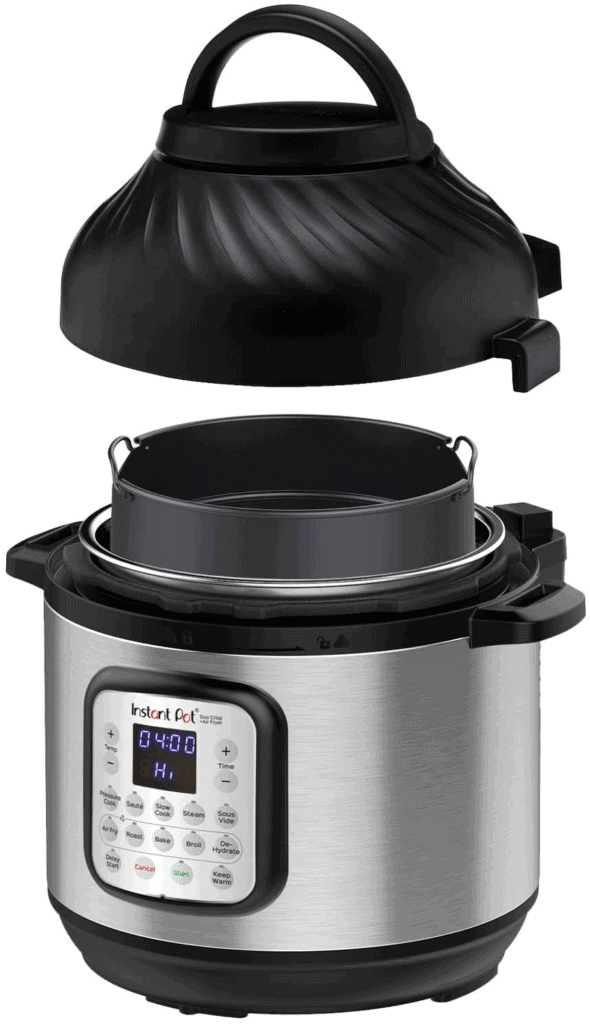
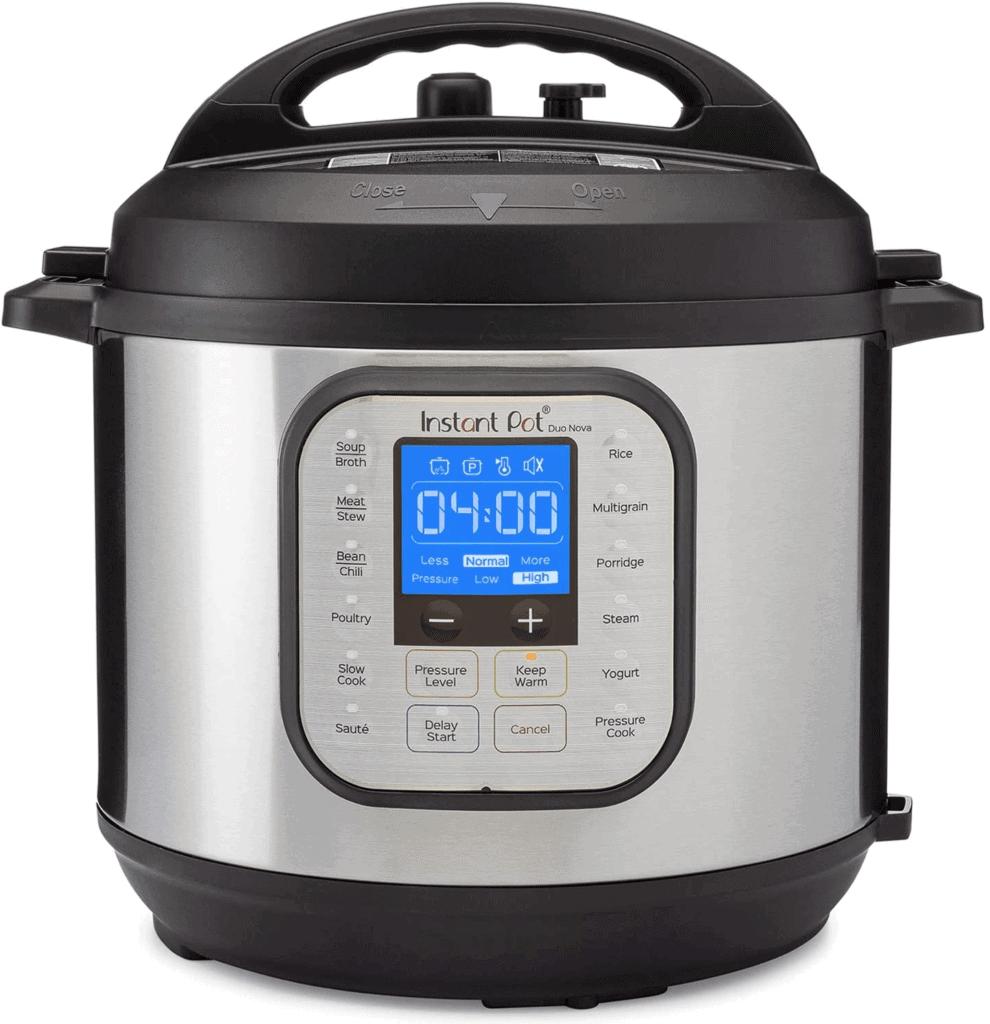

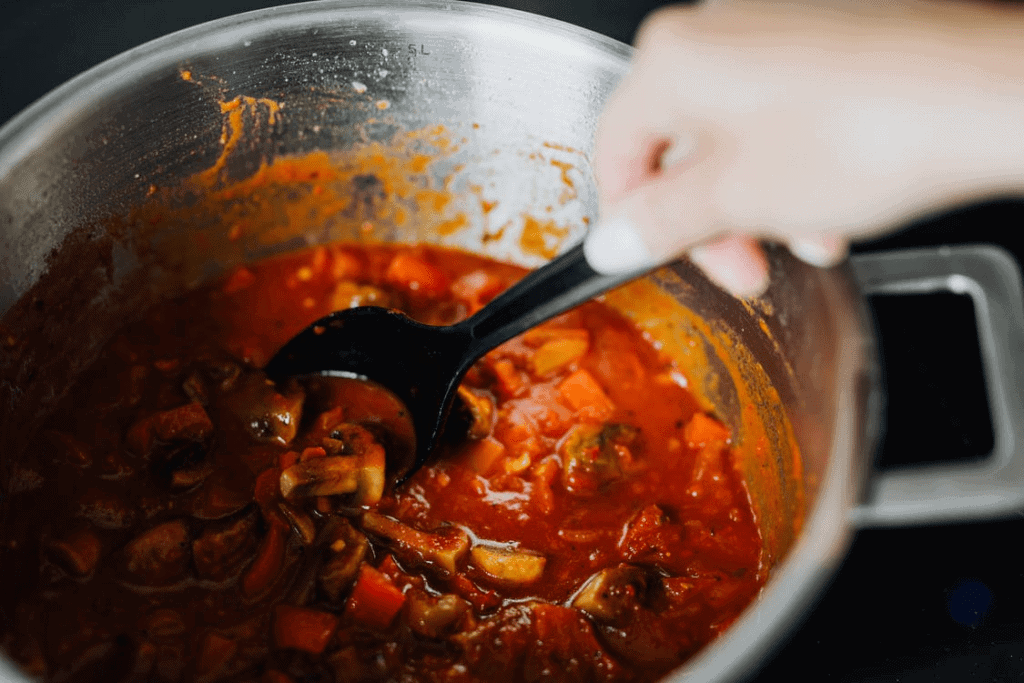
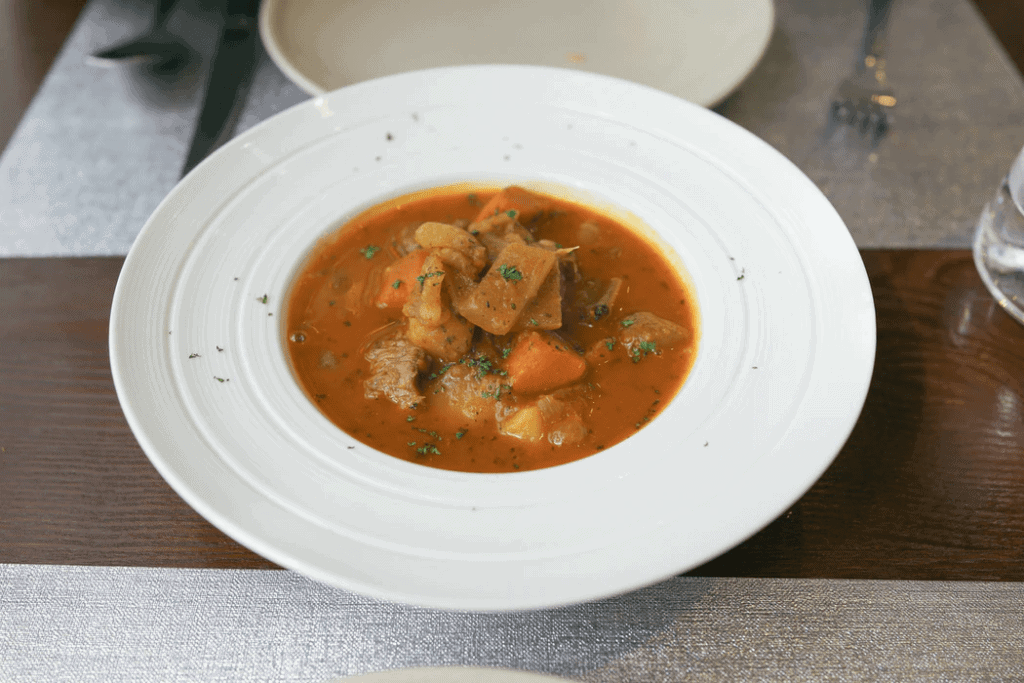

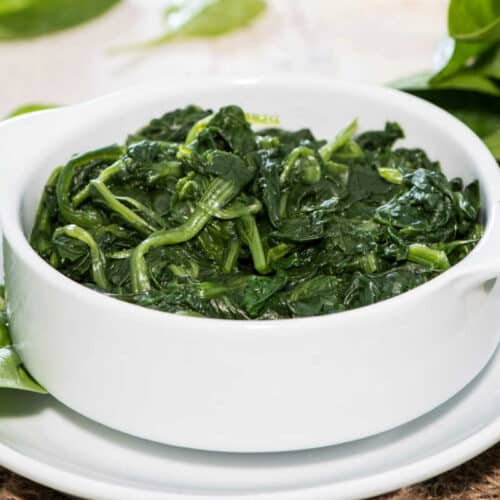
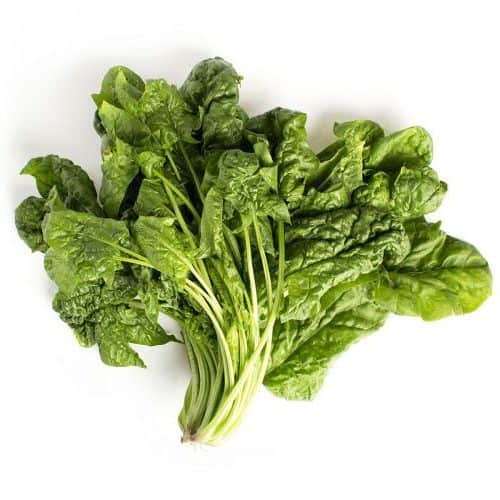



Leave a Reply